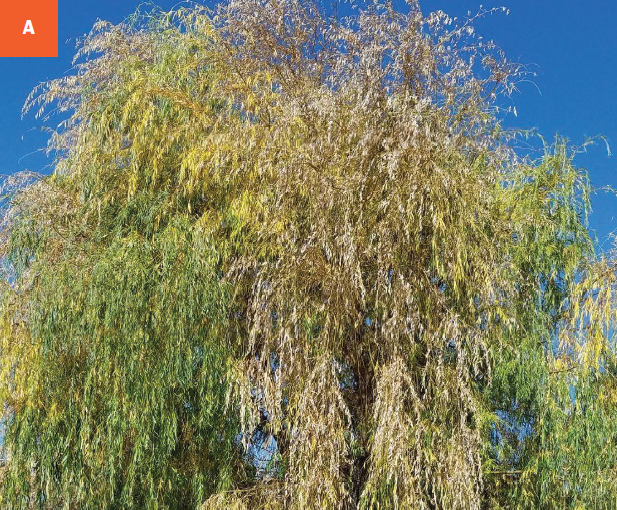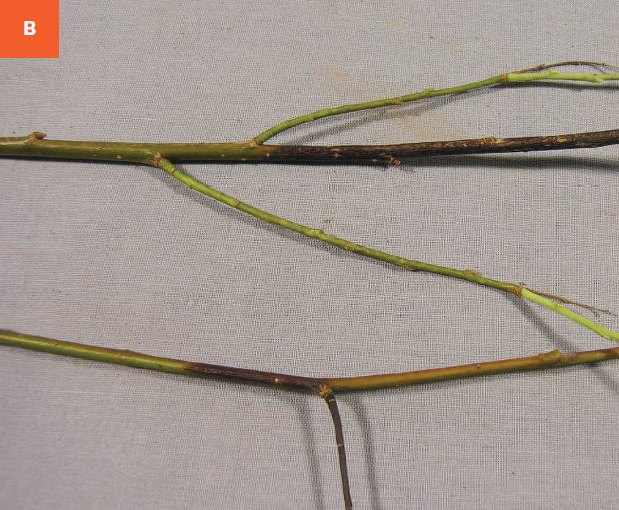Black Canker of Willow
Glomerella miyabeana (fungus)
HOST Willow
DAMAGE/SYMPTOMS Brown, irregular leaf spots appear on leaves in late spring and early summer. The fungus grows rapidly from the leaf blade through the petiole into the twig. Infected leaves may wither and die. Cankers develop on infected twigs and may girdle the twigs from within, resulting in dieback. Twigs may appear wilted with drooped or crooked tips.
DISEASE CYCLE The fungus overwinters in infected twigs. In spring, spores and/or conidia are released from the canker tissues and infect new leaves and twigs. The disease is spread by splashing rain and secondary infections may occur during warm and humid weather throughout the growing season.
MANAGEMENT Prune out and dispose of infected branches to reduce disease severity. Disinfect tools with 70% alcohol or a standard household disinfectant spray between cuts. Healthy pruning will also optimize air circulation and shorten periods of wet leaves. Support tree vigor by providing adequate water and nutrients during the growing season. Avoid wetting the foliage for prolonged times. Fungicides are usually not recommended in an urban setting.
A Dieback of branches on willow tree affected by black canker disease. B Dark brown cankers develop on willow branches resulting in dieback.


